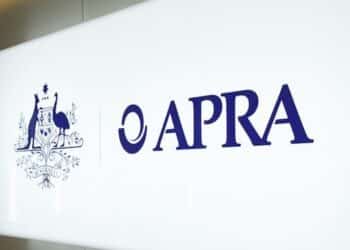On Monday, the Compensation Scheme of Last Resort (CSLR) board publicly released estimates of what advisers will be expected to pay for the first full year of the operation of the scheme – which starts on 1 July 2024.
The CSLR estimate for the first levy period is $4.8 million, which falls within the scheme’s annual levy cap of $250 million and will be funded by the Australian government. This estimate is expected to meet eligible compensation claims and costs from the CSLR’s commencement on 2 April 2024 to 30 June 2024.
In addition, CSLR has provided a second levy period estimate of $24.1 million, which also falls within the scheme’s annual levy cap of $250 million and within the $20 million sub-sector cap.
This estimate is expected to meet eligible compensation claims and costs from 1 July 2024 to 30 June 2025.
The estimate for each sub-sector is:
- Financial advice $18.5 million
- Credit provision $1.5 million
- Credit intermediation $1.8 million
- Securities dealing $2.3 million
Financial advisers will be required to pay $18.5 million in total, with the payment expected to be made in September 2024. The Australian Securities and Investments Commission (ASIC) uses the estimate determined by the CSLR to calculate the leviable amount per entity, which the regulator said would equate to a minimum levy of $100 plus $1,186 per adviser.
Financial Advice Association Australia (FAAA) chief executive Sarah Abood expressed “deep concern and disappointment” about the adviser cost.
“The CSLR is intended to promote trust and confidence in the financial services sector and in particular, financial advice. However, if advisers are driven out of business by rising costs, through being made to pay for the poor behaviour of those who left the sector years ago, there won’t be a financial advice sector left to have confidence in,” Abood said.
“Coming as it does on top of an historically high ASIC levy, this flies in the face of making advice more accessible and affordable for consumers, which is the stated aim of our government.
“We have been supportive of the scheme in principle, while calling out that the scope is too narrow (through not including MISs) and that the scheme must not apply to financial adviser small businesses in a retrospective manner. This expectation is consistent with both the Ramsay and Hayne recommendations for the establishment of a CSLR.”
She added that the combination of the Dixon Advisory “black swan” event and a shortened government-funded initial period has had a “highly retrospective and negative effect”.
“It is extremely concerning that because of these issues, the high quality and compliant financial advisers of today are being asked to fund compensation for the clients of Dixon’s, a firm which has been in administration now since January 2022 – over two years ago and long predating the establishment of the scheme,” Abood said.
Despite Dixon entering voluntary administration over two years ago, it is still a member of the Australian Financial Complaints Authority (AFCA) and there are almost 2,000 complaints before the complaints authority. The FAAA said that all these complaints should be classified as “legacy complaints” and funded by government.
It also explained that, as a result of the time it will take AFCA to process all these legacy complaints, many claims will fall into the period for which financial advisers will be charged.
“The actuarial report estimates the total cost to advisers will be $18.6 million in 2024–25 – of which the vast majority relates to Dixon’s,” Abood said.
In comparison, the FAAA said, the amount the government will pay in the first year of the scheme is $4.8 million in total, while only $2.4 million of this is estimated to be for financial advice and only one Dixon’s claim included in this estimate.
“This flies in the face of the intent when setting up the scheme, as it will now become almost wholly retrospective in the way it applies to financial advice, well into the second and later years of operation,” Abood said.
“We are urgently calling on the government to remove retrospectivity by covering historical claims based on the date the claim is made, not the date the claim is finalised.”
Blurring the lines of advice and product
In response to the CSLR estimates, Association of Independently Owned Financial Professionals (AIOFP) executive director Pete Johnston said it is further evidence of the important distinction between advice and product.
“Canberra bureaucrats have now inflicted another cost onto advisers who have no choice but to pass it onto to their clients,” Johnston said.
“We are pleased the initial CSLR set-up costs are met by the 10 largest institutions, and so it should be. Considering institutions are responsible for over $40 billion of failed funds since 2007 and today represent over 97 per cent of all AFCA complaints, they are by far the greatest failure for consumers in the financial services industry over the past 40 years.”
He said advisers are blamed for these product failures, adding that the Quality of Advice (QAR) reforms will only exacerbate the issue.
“Our understanding is most past consumer AFCA debts are a result of product failure where an advisory firm is somehow blamed for a failure, ‘hung, drawn and quartered’ by ASIC with no capacity to pay whilst those responsible for the product failing or allowing it onto the market in the first place, run for legal and political cover,” Johnston said.
“This is precisely why we do not want QAR allowing institutions back into the advice arena, they are simply not very good at it.”
AFCA’s usage of the term “financial firm” also raised concern from Johnston, who said it is a “concise and convenient way of grouping advisers and product manufacturers together under one category to protect the institutions from market scrutiny and damage”.
“When are Canberra bureaucrats going to understand that advice and product are two diametrically opposed functions and should be separated?” he said.
“We will now put this issue on our lobby list with adviser clients and both sides of politics.”




ASIC licence the products, let them in the market to be sold. Accountants and Lawyers help setup these companies and products yet now the people who invent those products that go belly up are to be protected by a CLSR funded by us(financial advisers) also victims along with our clients when things go wrong. We will be providing the warranty on the vehicle and the big end the town will continue to give $$$ to the major political parties and demand favors in return
Perhaps Financial Planners should be approving the product – seems fair to me.
what is funny is many planners voted for the alp, now that is very funny.
#hook, line and sinker.
the reality is that no one in Canberra gives a stuff about Professional Financial Advisers – Labor, LNP, Greens they’re all corrupted by their donations
Voted against the Liberals you mean. Now it is time to turn against the ALP – because it is becoming clear that the ALP has no intention of keeping election promises made.
The CSLR Levy and the ASIC Levy are just another method / tool for Canberra to do away with Financial Advisers, and the Levies will keep going up every year, and in a few years they will bring in another one for something else, and somehow justify it. If you need further proof of just how warped and wrong this is, just ask Jones if the ISF’s and their new ‘qualified advisers’ will have to pay the Levies also??? Nope, another exclusive carve-out for Jones’s buddies. It’s a joke and exposes just how corrupt Canberra truly is. I know it, you know it, we all know it.
Don’t be fooled, call it what it is – a shift in risk and responsibility. The CSLR is an easy Govt. shift in risk, responsibility and cost that Advisers will have to bear forever, and a rising one at that. Vote them out, or suffer indefinitely.
Canberra’s purpose is to represent all of the Electorate, not just who they cherry pick. It’s way time to take back control, enough of the talk.
Only well after they (politicians) are against the wall, will they budge. Time to move them on – out with Albo, Jones and his ISF buddies. Treat others like they treat you.
The estimate for each sub-sector is:
Financial advice $18.5 million
Credit provision $1.5 million
Credit intermediation $1.8 million
Securities dealing $2.3 million
Advisers punished again
The time for listening to Levy, Jones, the QAR etc. is up.
Ignore Canberra, just like they have ignored us, and boot them out next election. Forget listening, forget engaging, forget meetings, just turn your back on every single Politician and boot them out.
For years I have been advocating that our professional bodies needed to engage professional lobbyists in Canberra. Find someone connected to the current government, someone that has influence, pay the fees, and get in there and smash heads.
For years the AFA/FPA have been pussyfooting around trying to do things around the back door – lots of friendly lunches and duchessing. It was never going to work! The AFA even went to the extent of “engaging” a refugee from the New South Wales political system as some sort of lobbyist, again without any substantive success to demonstrate.
This is not the time to be nice. This is not the time to respect political connections. This is the time to kick heads and not to take prisoners. And it’s certainly not the time for nice little polite submissions to Treasury.
It is blatantly obvious that neither side of politics wants self-employed, independently thinking, advisers. The big end of town, in the form of the banks or the industry superfunds (take your pick) want to get rid of self-employed advisers. Always have, always will!
I would remind my fellow advisers that the old ISN employed a lobbyist who was permanently walking the corridors of Parliament House, dropping in unannounced to annoy Coalition ministers and activist politicians like ex Senator Williams. We need that presence full-time in Canberra
Either that or we start contributing around $1 million to each of the political funds because that’s what gets preferential action. Don’t believe me, then have a look at the electoral office returns issued in February each year, and see how much the banks give each year along with our mates in the industry funds
This is very much on point with where the Advice Industry is at with Canberra. We need votes and influence, dollars$ or both. Without anyone on the floor, we are lambs to the slaughter. It is time to kick heads or this Industry is headed for the scrapyard. Do the math – 15,000 advisers at $100 = $1.5m
Completely agree.
The AFA and FPA do not support “independent” advisers and never have. They are bought and paid for by the big end of town (banks, hedge funds and insurance companies) just like our polititians.
How many other industries do the good pay for the bad. Why do we hold PI insurance? No disrespect intended on our current management but at no stage in the last 25 years have we had any real wins and we should boycott any future contact with politician or regulators. It is pointless. They have treated us with complete distain. Our only communication with politicians and regulators should be via the media. When we want to say something take it to the news. The people of Australia have a right to know how incredibly unfair 25 years of mistreatment on good advisers has been. I am certain the FAAA are just as frustrated as the rest of us and we do not expect them to act professional any longer and attend the pointless meetings etc. I support a complete boycott.
“we should boycott any future contact with politician or regulators. It is pointless. They have treated us with complete distain. Our only communication with politicians and regulators should be via the media.”
100% correct – just go straight to the Media and get all of your clients to vote them out come election – it is a complete waste of time and resources dealing with anyone from Canberra, when all we are being fed is games, lies, gaslighting etc.
So 2 years down the track after Jones and Labor promised to fix the “hot mess”, 12 months of QAR submissions, another 12 months of listening to QAR promises, and all we have received to date is 2 big fat levies…Just give them the boot and not another chance. Sick of 20 years of total destructive BS!!!
Kick this government out at the next election, liars and thieves
Get rid of all these BS costs and the red tape and let us help more people and we’d save the Government BILLIONS upon BILLIONS in social security outlays.
But no, they’d rather collect another few grand from me instead of helping me save them millions by helping more Aussies become self-funded or at least less reliant on welfare.
All this goes to show that when corrupt Canberra wants to legislate or tax or both – it all happens in the blink of an eye. However, when an Industry such as Financial Advice is screaming out for meaningful reform – it gets kicked along the road as it doesn’t grab any votes. Just show our pollies the door next election and kick them out.
Imagine charging doctors this kind of levy, to cover failures of medicines, devices and hospitals? The AMA would go ballistic. There would be ads in every media channel calling out the nonsense.
Make no mistake, this is a direct result of our inept professional bodies, who have sat on their hands and allowed advisers to be scapegoated by the big institutions and the regulator for decades. The abuse of our profession has become so normalised, we are now seeing completely bizarre measures that are not a feature of any other profession or jurisdiction.
It is truly shocking just how bad this Industry has been treated by Canberra over the last 20 years
Just more confirmation of Jones and Labor’s true feelings towards the Financial Advice Industry – they couldn’t care less
Your client base is the best response to rejecting the Govt. and Jones – put it to work, just like we did with Frydenberg
Just bring on the Federal Election please.
Currently examining my fees for 1 July 2025.
Inflation plus Govt charges mean they need to rise by 12.8% come 1 July 2025.
Canberra refuses to listen – pure arrogance. They all feed on creating carnage and chaos. Show them the door come election time.
Let’s make Advice more Affordable says Govt, Jonesy, etc
Advisers just paid the Triple ASIC Levy / Double Taxation theft.
Now add another $1350 freaking CSLR Adviser Levy each. FFS its such a sad joke.
And you can Guarantee that Dixons claims will barley be processed by 30 June 2024, thus the real costs of Dixons Dodgy MIS fiasco will fall on Advisers.
How much are MIS providers paying for CSLR ? NIL yet they cause most of the claims.
REAL ADVISERS NEED TO TELL CANBERRA TO GET STUFFED !!!!!!!!!!!!!!!!!!
Hope is not a strategy – just vote them out and bring in someone else
The absolute scum bags in Canberra. Where is the compensation of last resort for all tax payers when we all get screwed by politicians and the bureaucrats? Time to go after them.
Drain the swamp.
Thieves, nothing more. Can we order a royal commission into the CSLR??
I utterly reject this endless retrospective guilt trip. Unfortunately my clients will, yet again, foot the bill. Well done.
What is our massive PI insurance costs covering? I’m sick to death of having to fund bad practices! It is time for a boycott of these government run/sanctioned organization’s. Here’s an idea, why doesn’t the Government fund this BS!!! FAAA time to say no! Enough is enough!!!
Liars and thieves. Why TAX Advisers on this? Institutions are responsible for over $40 billion of failed funds since 2007 and today represent over 97% of all AFCA complaints, they are by far the greatest failure for consumers in the Financial Services industry over the past 40 years. STOP MAKING ADVICE MORE EXPENSIVE AND FUND THIS ANOTHER WAY JONES!!!!
This is insane! Do they not WANT an advice profession? Footing this bill, like any other involving law enforcement, should be a taxpayer expense. We don’t fund the traffic police via levies on drivers! Why is this any different?
Jones/alp = industry funds.
its all part of the plan mate
Look, lets get something straight once and for all: Neither this government with its interests in the industry super funds nor the last one with its interests in the banks wants financial advisers at all. therefore you will be Royal commissioned, levied and weaponised complianced out as soon as they possibly can get you out. The fix is in and advisers remain friendless in Canberra.
It does not matter what the minister may say to your face, this is the harsh truth and the sooner they can get AI to take over altogether, the better.
Make no mistake, this will be the end of the Advice Industry. The Govt. has finally found the last nail to put in the coffin.